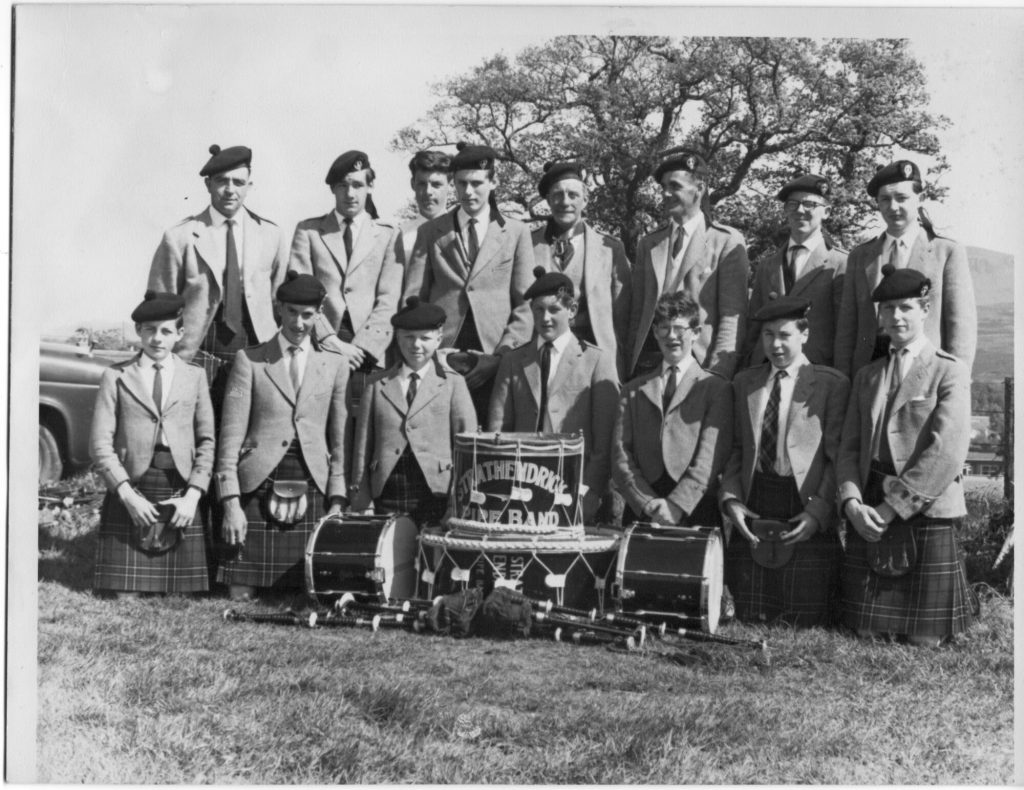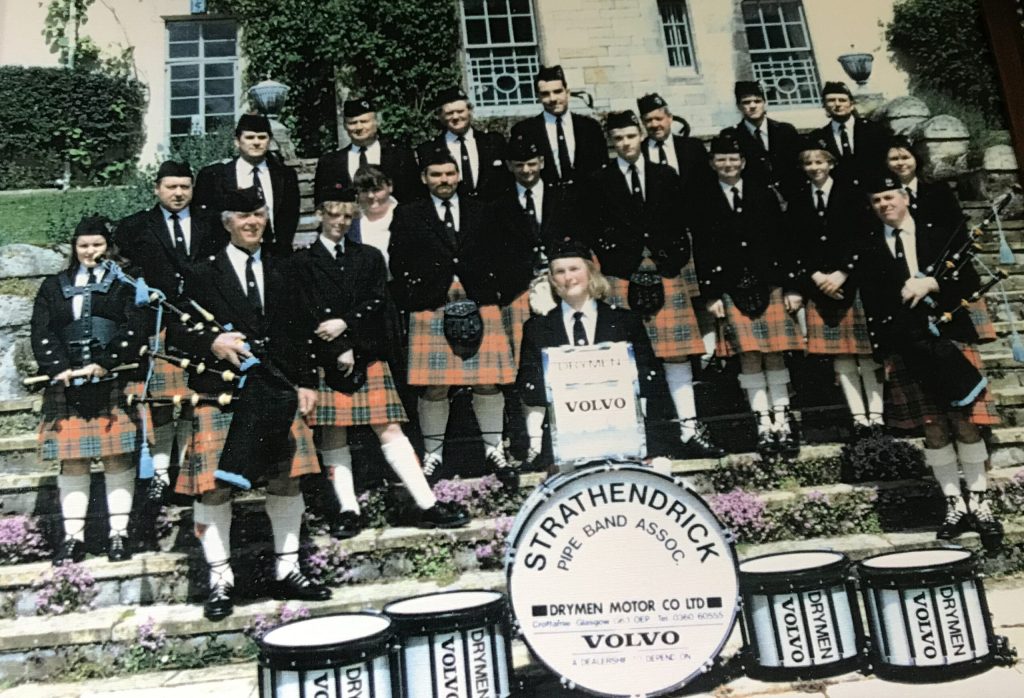For those who like a little history…
The bagpipes are thought to be first traced back to pre-medieval times, possibly as far back as 1,300 BC. Bagpipes have been documented as instruments of war since the 16th century and Strathendrick Pipe Band was affiliated to ‘S’ Company, 3rd Dunbartonshire Battalion Home Guard Pipe Band.
Following the 1945 peace and the ‘Stand Down’ order to the Home Guard, the members decided to create the Strathendrick Pipe Band Association to continue its activities. Its objectives were …”to encourage piping and its kindred arts, ie country and Highland dancing.
“It is considered that such an association will prove a definite social aspect to the district. Already a considerable number of boys have received instruction in our national music and dancing. Any effort to promote and popularise our own Scottish cultural arts deserves the support of the community.”
Its inaugural Pipe-Major was Tom McLean, a family name that has been closely associated with the band ever since.
The band’s focus has always been to bring in young people and enable them to learn new skills and become happy members of the band, while introducing audiences to traditional Scottish music – all with a firm emphasis on entertainment. Indeed, during the war years there was a separate unit formed, the Strathendrick Juveniles, under the Pipe Major-ship of Tom McLean’s son – T.W. McLean – as young people were not then allowed to join a military organisation. This unit was integrated into the main band towards the end of the war.
In those early days band members were kitted out in Black Watch kilts and Army tunics. So attired it won its first trophy in 1947, the Ballochmyle Shield at the Cowal Games. Tutoring in piping and drumming was the main attraction for new recruits, not least because these skills were passed on free of charge by the senior band members. Practice sessions were held in the Haig scout hut at Balfron. Amongst the stalwart players and officials in those days was Jimmy ‘Habby’ Simpson, bass drummer and secretary.
From those early days the Strathendrick band endured the inevitable ups-and-downs of most volunteer-led organisations, with members coming and going in and out of ‘rival’ local bands, and finances often tight. It had a schedule of regular appearances, at local Highland games, county fairs, cattle shows, fetes, galas, church parades and indeed playing every Saturday during the summer in Drymen village square. However typically there was no charge for these appearances, the band being funded through a combination of player subscriptions and donations. Players would also pay for their own transport to such events.
One constant through those times was the McLean name, with four generations providing leadership at different stages. Founder Pipe Major Tom McLean, from Balfron, served as band leader on no fewer than three occasions.
During 1961 the band was provided with new kilts in the Hunting McLean tartan, and new tweed jackets, after some hard fund-raising by committee members. In 1964 it re-entered the competitions field, in the newly-formed Grade 4 category for smaller amateur bands with a minimum of six pipers and two drummers. It gained prizes in both major and minor competitions, without ever troubling the trophy engravers for outright first placings.

In 1975 founder Tom McLean’s son, T.W., resigned as Pipe Major and was replaced by Tom Dingwall, who in turn retired two years later. He was succeeded by Pipe Major Archie B. Campbell who would go on to hold the post on three other occasions and play a major role in the band’s long-term survival and successes. During his first reign Strathendrick again entered successfully in a number of competitions, in particular winning nine Grade 4 prizes in 1978 – considered a major achievement for a rural band.
A particular threat to the band’s future arose in 1982 when some of the senior players moved on. Then-Pipe Major Robert Cranston took over and stabilised the band by recruiting new members and creating a focus on training them up to become solid players. More female players joined, a trend that has happily continued to this day. And by the time of its 50-year celebrations in 1994 the band boasted 25 members of which 15 were in the core chanter section.
Strathendrick Pipe Band celebrated its first 50 years with a bash at Duntreath Castle. An accompanying piece in the Milngavie Herald included mention of its first local sponsors in the form of the Drymen Volvo Motor Company and its owner Ian Philp. Indeed as the association has necessarily focused more on commercial activities and fund-raising, other local business figures such as Sir Arnold Clark, Jim McPherson and Jim Hamilton have generously donated to keeping the band’s pipes skirling and its drums beating, while wearing splendid outfits.

The tartan now worn by the band is the Ancient Maclean of Duart and the band is under the Pipe Majorship of Colin Johnston.
